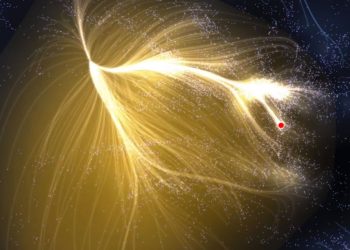Archaeologists have uncovered a remarkable carving of a running wild donkey on a stone during the ongoing excavations at Karahan Tepe, a Pre-Pottery Neolithic site situated in Şanlıurfa, southeastern Türkiye.
Karahan Tepe is part of the emerging Pre-Pottery Neolithic sites within the Taş Tepeler region, located in the Şanlıurfa province of Southeast Turkey. Just 23 miles (37 km) southeast of the renowned Göbekli Tepe, Karahan Tepe is integral to the broader Taş Tepeler (Stone Hills) project, which encompasses numerous sites distinguished by T-shaped anthropomorphic pillars, first brought to prominence by discoveries at Göbekli Tepe. As excavations continue in 2024, more than 250 T-shaped obelisks have been discovered at Karahan Tepe. Among these findings is a stone floor adorned with a depiction of a running wild donkey, a significant addition to our understanding of Neolithic iconography.
Professor Dr. Necmi Karul, the head of the Karahan Tepe excavation team, explained that their work is ongoing at 10 different locations, including Karahan Tepe, as part of the Taş Tepeler project. This year, the team has focused on several public buildings and huts surrounding the central public structure at Karahan Tepe, with one such building being excavated in recent weeks. Dr. Karul described the structure as partially subterranean, featuring a wattle and daub roof supported by a short stone wall. The floor, he noted, was paved with large flat stones, some of which had been used as grinding stones. It was on one of these stones that the wild donkey motif was discovered.
https://x.com/MehmetNuriErsoy/status/1829769689217528156
Dr. Karul elaborated on the significance of this find, noting that the animals depicted in the iconography of this period generally fall into two categories: those with an eerie, imposing presence, often seen on the obelisks, and more commonly consumed animals, such as birds and gazelles, with wild donkeys being among them. The depiction of the donkey in motion, carved onto the base of a grinding stone, is particularly notable as it is the first of its kind discovered at Karahan Tepe, and it adds to our understanding of the relationship between humans and their environment during this period. Dr. Karul also pointed out that the structures under investigation date back approximately 11,000 years, with the presence of grinding stones indicating that daily life activities took place in these spaces. He emphasized that the symbolic significance of the animal carvings and obelisks found in these structures highlights the complex cultural practices of the time.
The depiction of the donkey, approximately 20 centimeters in length, stands out not only for its scale but also for its dynamic portrayal, which reflects the artistic skill of the Neolithic period. This find is the first example of such a motif on the floors of buildings at Karahan Tepe, suggesting that there may be similar discoveries yet to be made as the excavations progress to deeper levels. Mehmet Nuri Ersoy, the Turkish Minister of Culture and Tourism, shared on social media that Karahan Tepe continues to illuminate the depths of history as one of the most significant Neolithic Age settlements. The ongoing work within the Stone Hills project is shedding new light on world history.











